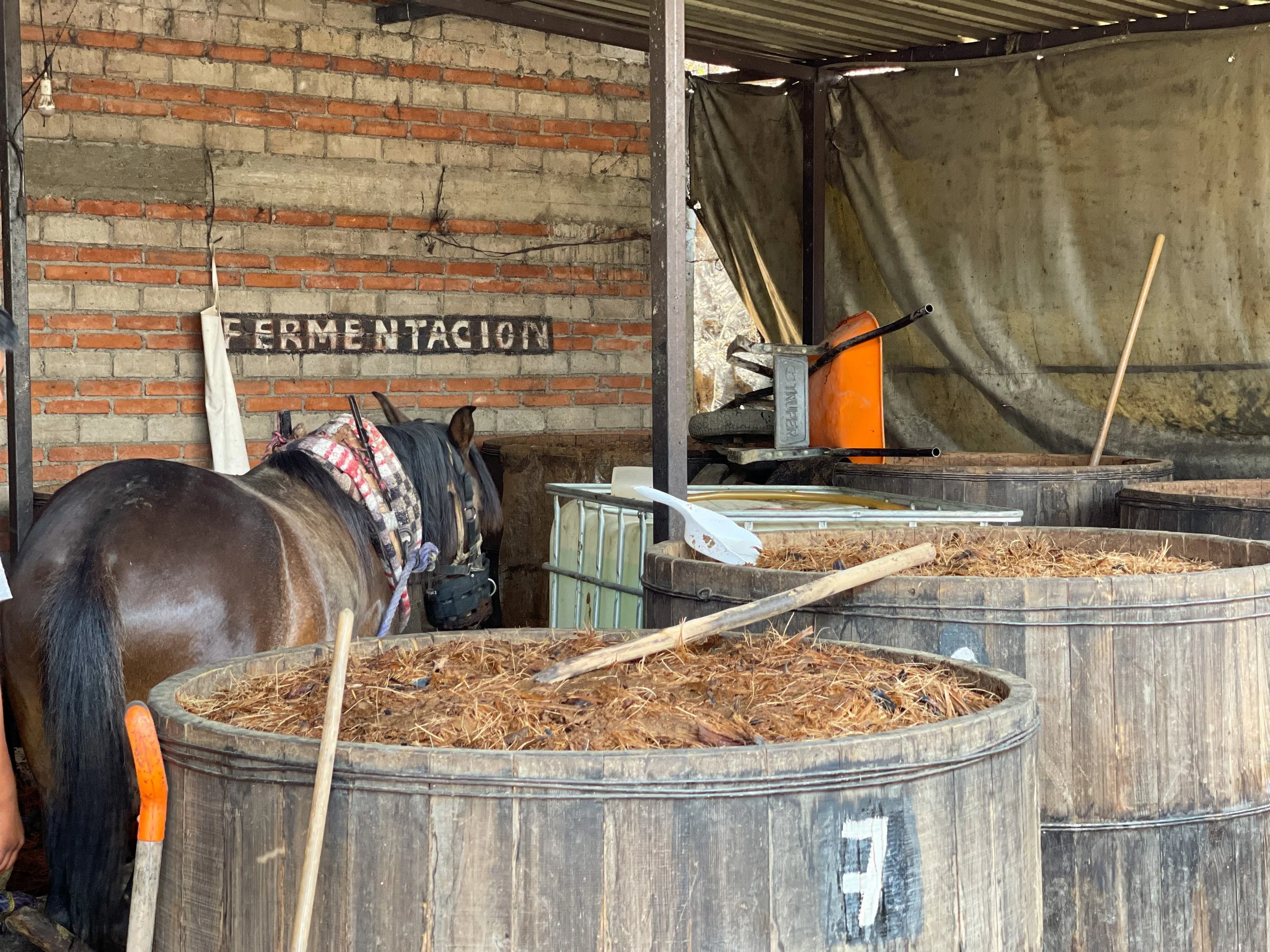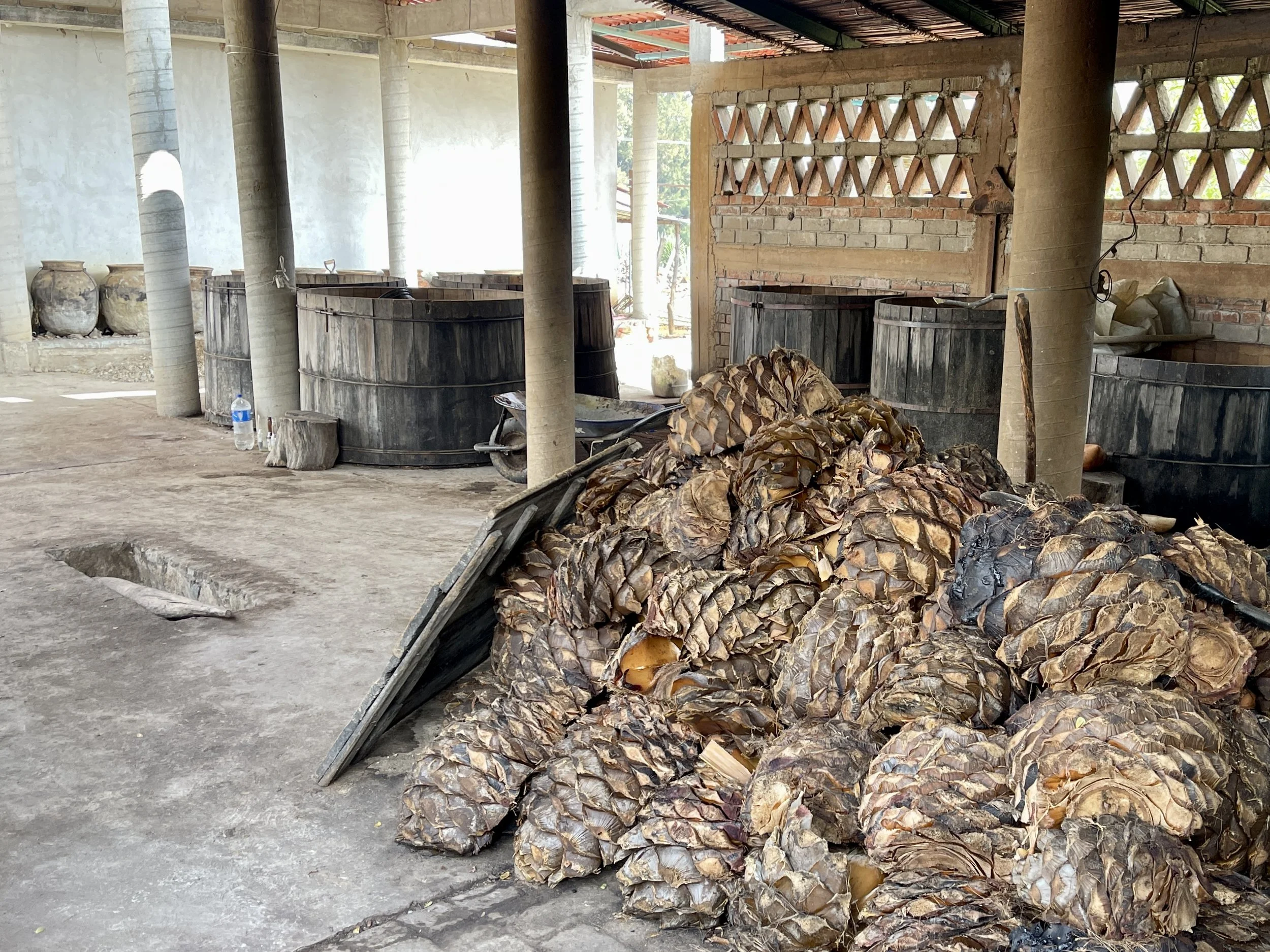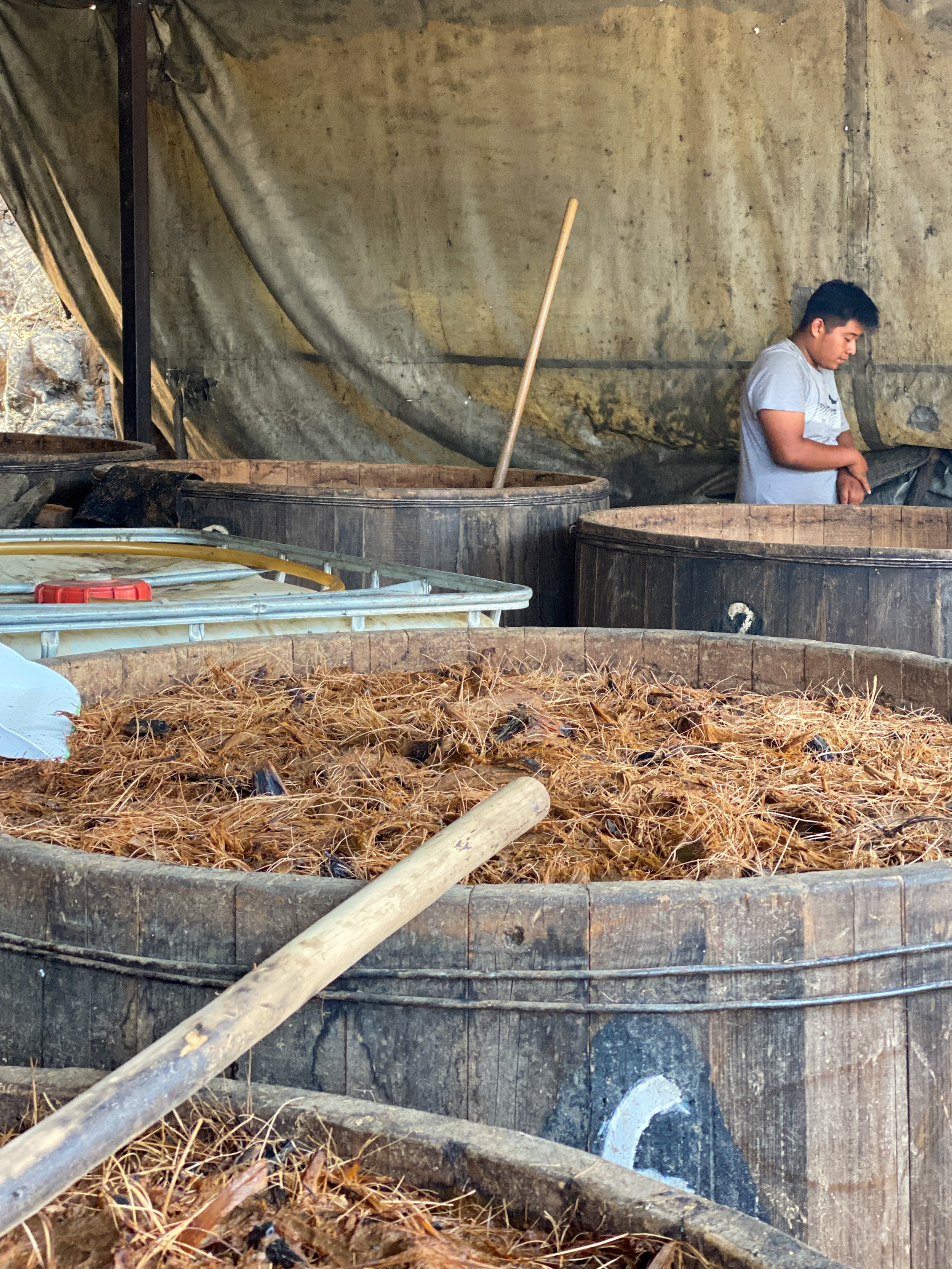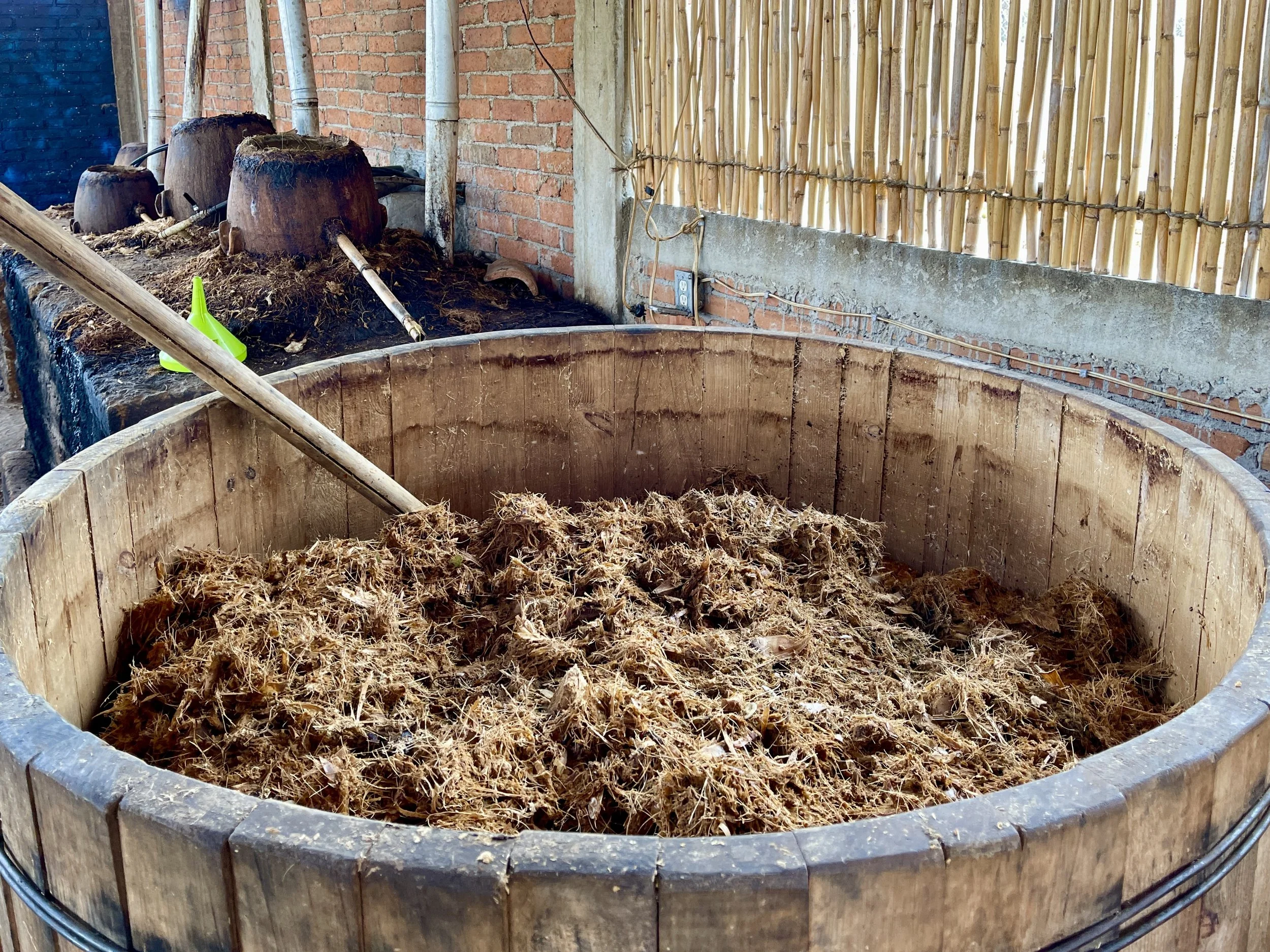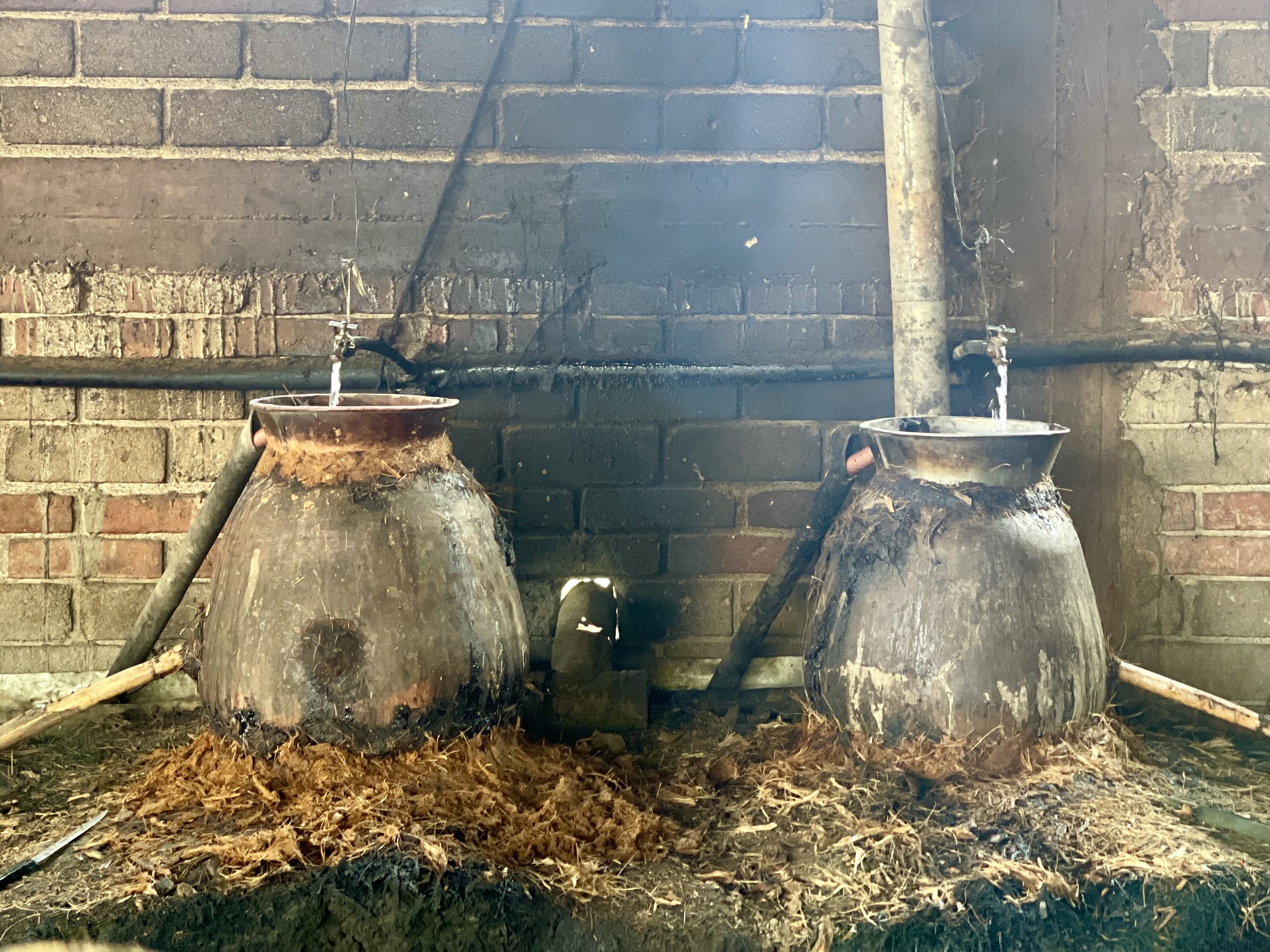What is mezcal? Here’s the process to create this artisanal alcohol that’s gaining in popularity — and giving tequila a run for its dinero.
A horse, agave and giant barrels are all used to make the popular beverage mezcal.
I can’t quite remember the first time I tried mezcal. It was most likely mixed into a cocktail at a restaurant somewhere in Chicago. I vividly recall it being intense. In fact, when I recounted this memory to Alvin Starkman of Mezcal Educational Tours, I believe my exact words were, “It was like sitting in front of a campfire blowing smoke in my face.”
It wasn’t until our first trip to Mexico City in 2018 at Los Danzantes, a restaurant in Coyoacán, that I drank a joven espadín, an unaged mezcal, from a veladora, a clear fluted glass with a cross engraved on its bottom, that it all changed for me.
“As strange as it may seem, mold is a part of the process — and a factor in mezcal’s taste. ”
Wally had learned about Alvin in the useful travel guide Viva Oaxaca by Robert Adler and Jo Ann Wexler. He reached out to Alvin to arrange a day trip for us.
When Alvin picked us up at our hotel, he started our education by sharing his backstory. Oaxaca, which began as a favorite destination in 1991, drew him and his wife back, until they bought a parcel of land in the Sierra Madre mountains, built a house and relocated permanently from Canada in 2004. Like my father, Alvin enjoys scotch and found a similar appreciation in mezcal.
Authenticity is of utmost importance for Alvin when he gives his tours. “The day is not pre-planned for the tourist trade, meaning I never know who will be at what stage of production where and when — the objective being to illustrate as much as possible as it is happening,” he says.
Palenqueros (mezcal artisans) often grow their own agave, though many supplement it from other farms.
The word “mezcal” is the generic term for spirits made from the roasted heart of the agave (referred to locally as maguey) — the same plant used to make Mexico’s biggest export, tequila. It derives from the indiginous Náhuatl words metl (agave) and ixcalli (baked). However, unlike tequila, the agave must be roasted to be made into mezcal. It can be produced from a dozen different varieties of agave, each with its own character and subspecies, including but not limited to espadín, arroqueño, madrecuixe, tepeztate, tobasiche and tobala.
A tour with Alvin Starkman of Mezcal Educational Tours will show you the various steps of the mezcal-making process in action at a variety of family-run palenques, or distilleries.
Harvesting Piñas: The Heart of the Matter
Oaxaca’s Central Valleys currently have the highest concentration of traditional producers, known as palenqueros, who distill the spirit in palenques alongside their other crops and farm animals.
After eight to 30 years — the period of time it takes for an agave to reach maturity, farmers known as jimadors use machetes to cut away the sword-like pencas (leaves) and use a coa, a specialized tool to extract the piña, or heart of the maguey. The leafless piña looks like an overgrown pineapple.
The heart of the agave plant, the piña, is a key ingredient in making mezcal and often looks like a giant pineapple or pinecone.
Baking the Piñas: Where There’s Smoke There’s Fire
Once the piñas have been harvested and taken to the palenque, a deep earthen pit is filled with firewood and lit. A layer of rocks is placed on top of the burning wood, and after about five or six hours, are as hot as they’re going to get.
The piñas are piled into the pit oven by size, the largest at the bottom and the smallest on top. A layer of bagasse, the damp fibrous byproduct that remains after the piñas have been crushed and had their liquid extracted (but more on that later), gets added to insulate the piñas from the hot rocks.
Mezcal’s smoky flavor should come from slow-roasting piñas in a pit like this.
According to our guide, Alvin, “If you’re a good Catholic, you’re going to stick a cross on top of the mound to ensure your piñas produce a good yield and good flavor.”
The hearts are covered with agave leaves, straw mats, grain sacks and dirt piled high to form a kind of volcano. Water is then poured into the opening at the top of the mound to release the smoke trapped inside the oven, and the piñas are left to slowly roast underground for several days. This allows the heat to convert the carbohydrates into sugars.
A roasted piña, before it’s chopped up and mashed
Mashing the Piñas: Beaten to a Pulp
After they’re caramelized, the pit-roasted piñas are removed and left to cool.
As strange as it may seem, mold is a part of the process — and a factor in mezcal’s taste. “The longer it stays out, the moldier it’s going to get,” Alvin tells us. “Sometimes the mold is green, sometimes it’s yellow, sometimes it’s orange. So the mold is also going to impact the flavor.” They are left to rest between eight days to a month.
A man chops up roasted piñas to get crushed. Alvin says farmers from Oaxaca practically grow up with a machete in their hands.
Roasted piñas sit around for up to a month to get a nice flavorful mold on them.
The palenquero hacks the roasted piñas into smaller pieces, which are transferred to a stone pit, where they are laboriously crushed by hand using a cartoonishly large wooden mallet, or by a tahona, a large stone wheel pulled around a circular pit by a donkey or horse.
Alvin holds a large wooden tool used to crush roasted piñas.
Another option to crush piñas is to lead a horse attached to a massive stone tahona around and around a setup like this.
Palenques are family-run affairs — and they start the kids young. This adorable fella helped encourage the horse to walk the giant tahona around.
Once the piñas are sufficiently pulverized to a mash, the roasted pulp and nectar are transferred into a wood vat. The dry, fibrous leftovers (the bagasse previously mentioned) can be used to make adobe, fuel or mulch — or to insulate roasting piñas for another batch of mezcal.
Large wooden vats hold the mashed piñas and the extracted juices as they ferment.
Fermentation: Yeasty Beasties
The sweet mash and its juices are shoveled into large open-air wooden tubs or vats. Water is slowly added, and as the mixture interacts with naturally occurring airborne wild yeasts and bacteria, fermentation starts.
“Traditional mezcal makers use river water, mountain spring water or well water,” Alvin explains. “A well is fed by underground streams that come from different directions at different times of the year. So the water quality with traditionally made mezcal is always different and is integral to the final product’s quality.”
The vats are topped with bagasse, fibrous straw-like leftovers from agave cultivation, and left to ferment naturally over the course of three days to two weeks.
As the sugars break down the mash, the brew begins to bubble. The palenquero stirs it, and eventually the bubbling subsides, leaving a brown crust that looks like maple sugar candy on the surface of the vat. Depending on the season, the altitude and the temperature, this can take anywhere from three days to two weeks fully ferment. Once it has 3% to 5% alcohol content and looks, smells and tastes like apple cider vinegar, it’s ready to be distilled.
Distillation: Good to the Last Drop
Distillation is the process in which alcohol is concentrated via evaporation under heat and pressure. The goal of distillation is to separate the desirable elements (alcohol) from water as they recondense into liquid.
Mexico’s pre-Hispanic society was already familiar with a variety of fermented beverages, including the maguey-based pulque. The arrival of Filipino sailors in the 16th century introduced the indigenous peoples to the clay still, while the Spanish colonizers brought with them the knowledge of copper alembic stills in the 17th century.
The first stop on our tour with Alvin was Santa Catarina Minas, south of Oaxaca de Juárez, at the palenque of Maestro Felix Ángeles Arellanes. It was a great glimpse into the process. There the fermented liquid and mash is added to a barro de olla, a cauldron-like clay pot that has been fitted into a masonry oven. A second pot, which is open at the top and bottom, is placed over the mash-filled olla and sealed with the maple candy-like goo and bagasse to prevent any steam from escaping. Above and behind all this is a pipe with a spigot.
Embers glowed in the stone masonry ovens beneath, as tendrils of smoke plumed above the tops of the clay pot stills. This step needs to be closely monitored, as the temperature the spirit is distilled at directly impacts the quality and flavor of the mezcal.
A fire is lit below, the spigot is turned on, and a running stream of cold water fills a metal cooling pan fitted into the mouth of the top pot. In the bottom pot, the fermented mash slowly boils. The alcohol vapors rise, and when they come into contact with the cool bottom of the pan, they condense and form droplets. These fall into a carrizo cane, a hollow reed tube, and are collected in a container. This is the first distillation, often referred to as shishe or común.
Wally and I sampled the distillate directly from the still in a jicara, a hollowed-out gourd bowl traditionally used to serve mezcal. Alvin explained that this was the punta, or the head. Suffice to say, it was potent, at 70% alcohol by volume.
Another technique to distill mezcal is to use copper instead of olla pots.
Traditionally made mezcal is distilled twice, and occasionally three times, until the ABV is reduced to 40% to 50%.
When they’re not in use, Maestro Felix Ángeles Arellanes typically tops the ollas with old metal discs from retired plows. He doesn’t want his chickens laying eggs inside.
We would go on to sample 18 unique variations at Arellanes’ palenque. The spirits were stored in a variety of large plastic containers, garafones, with their names handwritten on masking tape.
Be warned! You could be sampling over 12 types of mezcal at each stop!
Experiencing this process in person was an eye-opening experience and gave me incredible appreciation for the amount of work involved in producing mezcal. It’s made by hardworking human hands, and the maker wants every batch to be as good as he can make it. He might not understand all the reasons, but he understands that inevitably no two are the same. Sure, there are some smoky types, but there are also ones with herbaceous, savory or woody notes.
For that, you see, is one of the beauties of mezcal — and why Alvin says it’s akin to scotch — there’s always a variability from batch to batch. –Duke

